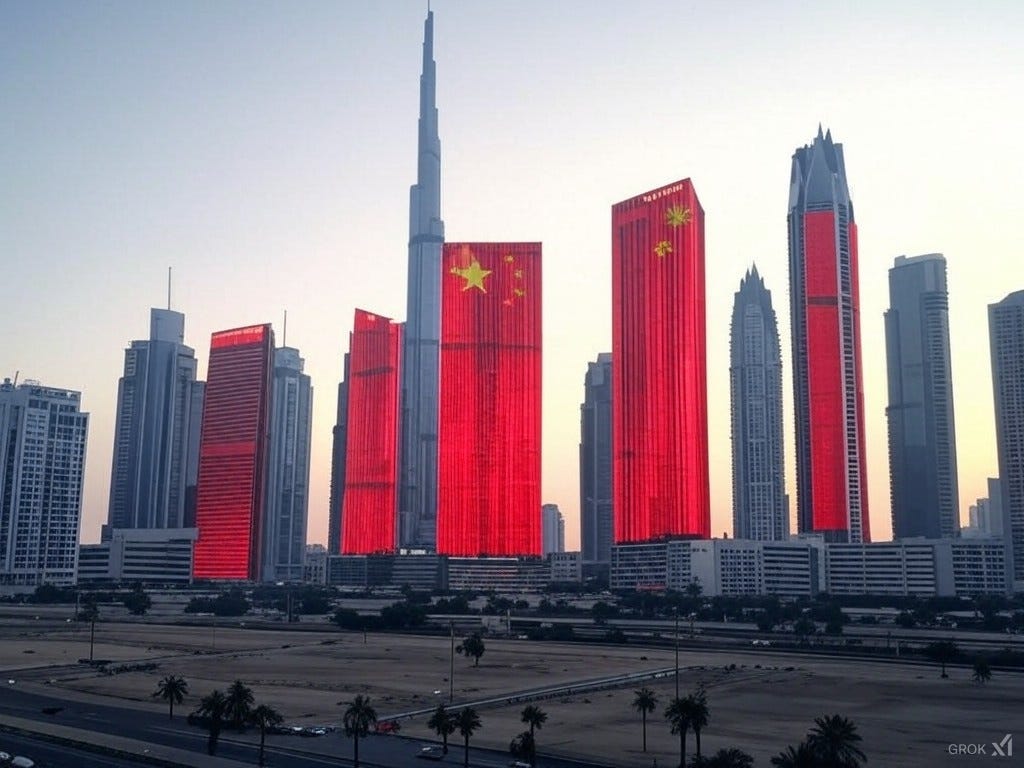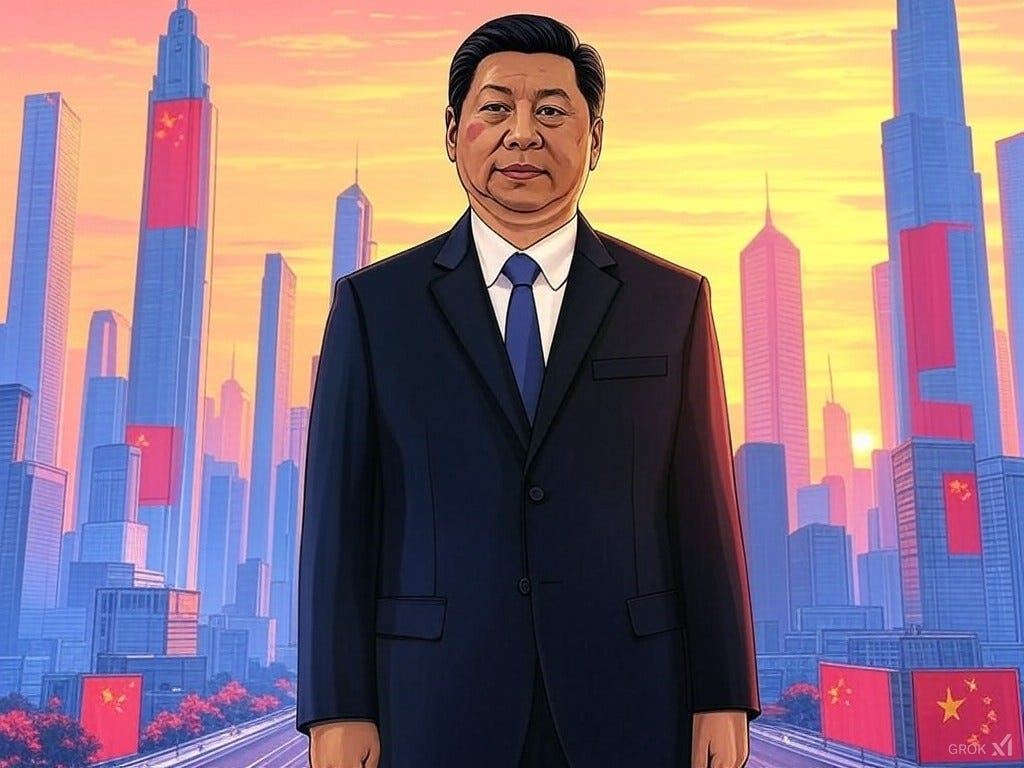#33: The rise of China's international REAL ESTATE investments and its impact!
Chinese investments in overseas real estate markets, the strategies behind these investments, and their impact on global property prices.
Welcome to "Decoding the Dragon," where we unravel the intricate tapestry of China's global influence.
Today, we're diving into the colossal world of Chinese real estate investment abroad, a sector that has seen investments exceeding $120 billion in overseas property markets since 2010.
This narrative isn't just about buying land - it's about reshaping global real estate dynamics, influencing economies, and altering urban landscapes from New York to London to Sydney.
Let's rewind to the post-2008 financial crisis era.
As Western markets struggled, China capitalized on the opportunity.
Chinese investors, flush with capital from a booming domestic economy, began eyeing foreign real estate as a safe haven for their money.
This was not just individual investors but also state-owned enterprises and private conglomerates seeking to diversify their portfolios and secure assets abroad. The initial wave was cautious, focusing mainly on countries like Australia and Canada, known for their stable real estate markets.
For instance, in 2010, Chinese investment in Australian real estate was a mere AUD$2.5 billion. By 2014, this figure had skyrocketed to AUD$12.4 billion, representing a 496% increase in just four years.
In fact, at that time, Chinese investment in Australian real estate had grown to represent 23% of all foreign purchases, significantly impacting markets in Sydney and Melbourne.
This dramatic rise underscores the rapid growth of Chinese interest in overseas property markets during this period.
The strategies behind these investments were multifaceted.
Initially, the focus was on residential properties in major cities, driven by the allure of stable property prices, educational opportunities for families, and the prospect of capital gains.
Companies like Greenland Group and China Vanke emerged as pioneers, buying up land, skyscrapers, housing societies and more in cities like London, New York, and Sydney.
These firms not only invested in real estate but also in large-scale infrastructure projects, thereby expanding China's footprint and influence in global urban development.
A prime example is Greenland Group's $1 billion investment in the Metropolis project in Los Angeles, which included residential towers, a hotel, and retail space.
And, by 2016, the scale of these investments had grown, with Chinese buyers purchasing over $31.7 billion worth of US real estate, particularly in hotspots like New York, Los Angeles, and the San Francisco Bay Area.
These locations were chosen for their economic stability, global connectivity, and the presence of significant Chinese communities, which helped mitigate cultural barriers. However, this surge wasn't without its challenges.
The US and other nations began to view this massive and concentrated influx of Chinese money into real estate with scepticism, leading to policy changes aimed at cooling down the momentum.
For instance, cities like Vancouver introduced a foreign buyers' tax in 2016 to curb escalating property prices influenced by overseas investment. As a result, the city saw a 17% drop in home sales to non-residents in 2017.
However, some of these investors shifted their focus to other Canadian cities like Toronto, where Chinese investment continued to drive up property prices.
..
The geopolitical dimension added layers of complexity.
As China's economic clout grew, so did the geopolitical tensions with countries wary of Chinese influence. This was particularly evident in the US, where national security concerns about who could own property near military bases or sensitive areas started to shape policy.
The Committee on Foreign Investment in the United States (CFIUS) began scrutinizing real estate deals more closely, reflecting a broader trend of protectionism against foreign, especially Chinese, investment involving $1 million or 100 acres of land.
According to a report by the Rhodium Group, CFIUS reviews of Chinese real estate deals increased by 400% between 2015 and 2017. This heightened scrutiny led to the abandonment of several high-profile deals, including Anbang Insurance Group's attempted acquisition of the Waldorf Astoria Hotel in New York.
This scrutiny led to a significant decline in Chinese investment in US real estate. In 2018, Chinese direct investment in US real estate fell to $4.8 billion, a sharp drop from the $31.7 billion peak in 2016.
But by 2015 to 2020, as China's own real estate market began showing signs of saturation and risk, Chinese investors started looking beyond traditional residential properties towards commercial real estate and infrastructure in regions like Southeast Asia and Africa.
This was part of China's Belt and Road Initiative, which not only aimed to build infrastructure but also to secure long-term investment returns through real estate.
A good example is from Malaysia. Chinese investment in the Forest City project close to Singapore has reached over $100 billion.
This project is a key example of how Chinese investment is shaping urban development along the Belt and Road. This one however has been a dud in terms of. occupancy and has thus attracted a lot of bad press.
However, the global health crisis (COVID-19) in 2020 brought new dynamics.
With travel restrictions and economic uncertainties, direct investments dropped, but interest in digital real estate and data centres surged, aligning with the global shift towards digital economies.
Companies like Tencent and Alibaba began investing in data centres in places like Singapore and Germany, recognizing the future value of data infrastructure.
..
Anyhow, the key thing is that the impact of all this on global property prices has been significant.
In cities like Sydney and Toronto, Chinese investment has been credited with inflating property prices, leading to affordability issues for local residents.
Research by the University of Sydney found that a 1% increase in Chinese investment in Sydney's housing market led to a 0.6% increase in housing prices. This impact was particularly pronounced in areas with high concentrations of Chinese buyers.
And, this trend isn't limited to Sydney.
A similar study by the Bank of Canada found that Chinese investment accounted for approximately 10% of the rise in housing prices in Vancouver between 2005 and 2015.
And as of 2024, Chinese investments contributed to a 64% increase in the average Canadian home value over the past decade, highlighting the dual impact of boosting local economies while simultaneously challenging housing affordability.
This highlights the significant impact of Chinese investment on housing affordability in major global cities.
In contrast, in some US cities, the investment has helped revitalize neighbourhoods and stimulate local economies by increasing property values and attracting further business.
Comparing this with India, the scenario is quite different. While India has seen a rise in foreign real estate investment, it's predominantly not from China but from other Asian countries like Singapore and Japan, and mostly from institutional or private equity investors like Blackstone.
The Indian real estate market, while growing, is regulated to ensure that foreign investments do not distort local market dynamics as significantly as seen in some Western markets.
Meanwhile, the US has been tightening regulations, with states like Florida proposing laws to limit or ban certain foreign real estate acquisitions, particularly from nations deemed adversaries, including China.
This reflects a broader geopolitical strategy to safeguard national interests against perceived threats through economic means.
Overall, the future outlook for Chinese real estate investment abroad is nuanced.
The trend suggests a shift towards more strategic, long-term investments rather than speculative buying.
Companies are now more interested in projects that align with China's broader economic strategies, like green energy, tech innovation, and sustainable urban development.
Additionally, there's an increasing focus on countries that are geopolitically aligned or neutral, reducing the risk of backlash or policy restrictions, as seen in India for instance following the Galwan Valley clash of 2020.
For stakeholders, the tailwinds include the continued urbanization and development in emerging markets, offering new investment opportunities. However, headwinds are pronounced with rising geopolitical tensions, potential investment restrictions, and the need for more sustainable and less speculative investment strategies.
That said, in terms of recent developments, one can't ignore the policy changes in China itself, where the government has been promoting the use of real estate investment trusts (REITs) to stabilize the domestic market which has seen the real estate sector collapse as a whole.
This indirectly influences how and where Chinese investors look abroad. Moreover, the relaxation of some capital controls in 2023 has allowed for more fluid movement of capital for real estate investments, though with stringent conditions aimed at curbing speculative bubbles.
Thus, to conclude, the story of Chinese real estate investment abroad is a saga of economic ambition, strategic foresight, and geopolitical chess.
As we stand on the start of 2025, this sector will continue to evolve, shaped by global economic currents, domestic policies in China, and the ever-changing tapestry of international relations.t about anticipating the next move in this global game of real estate.
Best,
Jayant Mundhra









